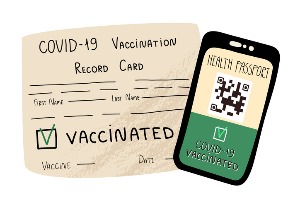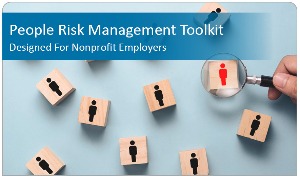
Running a nonprofit is the noblest example of a labor of love. The mission and vision are clear, the team driven by passion, and the pursuit of bettering the world is unflagging. However, in the midst of this impassioned journey, the need for structuring operations can sometimes be overshadowed. One of the pivotal yet often underestimated tools in the nonprofit’s arsenal is a well-crafted employee handbook—your statutory script that helps maintain order while supporting the organization’s growth and sustainability.
The Importance of an Employee Handbook
An employee handbook is the cornerstone of any professional organization. While the regulations governing nonprofits may vary, the need for clear and concise guidelines for employees doesn’t. Imagine your handbook as a detailed map of the terrain that marks out safe and sanctioned paths for your employees to traverse through their professional environment.
In the context of a nonprofit, where the spirit of the cause is integral, a handbook goes beyond a list of do’s and don’ts. It reflects your commitment to transparency, fairness, and nurturing a supportive work culture. It outlines your value system and empowers your team members with the knowledge necessary to align their actions with the organization’s broader goals.
Crafting Policies Tailored to Your Mission
Here, we delve into the art and science of handbook policy-making for nonprofits. The policies you establish and the language you use should mirror the unique essence of your nonprofit’s mission. For instance, if your nonprofit’s primary focus is environmental conservation, your handbook could include specific guidelines for eco-friendly practices at the workplace and during off-site events. Similarly, if your cause deals with vulnerable populations, your policies would need to highlight confidentiality and sensitive handling of information.
It’s not just about what you should include but also what you can exclude. As a nonprofit, your policies should be lean and mission-specific, steering clear of the bureaucratic verbosity often found in corporate manuals. Your intrinsic appeal lies in the directness and decisiveness with which you address matters, both operationally and ethically.
Understanding Charitable Compliance
For nonprofit policies, compliance is not just about what is obligatory under general labor laws but also about adherence to the specific clauses that ensure their charitable and tax-exempt status. Here, a thorough understanding of IRS guidelines and any state-specific laws is imperative. Your handbook should not just parrot legal jargon; it must integrate compliance with your organization’s spirit and mission, making the rules as impactful as possible.
Volunteer Inclusion and Engagement
Volunteers are the unsung heroes of the nonprofit world. Ensuring their inclusion in your handbook and understanding their legal standing is non-negotiable. Whether it’s guidelines for volunteer work, reimbursement policies, or recognition practices, a comprehensive handbook accounts for the unique role and importance of volunteers in organizational success.
Language That Leads
The language in your handbook is critical. It should be devoid of ambiguity, friendly but firm, and most importantly, it should inspire and guide. While there may be a temptation to formalize language due to legal stipulations, strive for a balance that never detracts from the heart of your mission and the human element it embodies.
Tailoring Your Tone
The voice of your handbook should echo your organization’s culture. If you’re an advocate for child welfare, the voice should be compassionate and assertive, reflecting the seriousness of the cause. If environmental sustainability is your banner, a tone laced with urgency and practicality can underscore policies on waste management.
The Clarity Imperative
Every word matters when it comes to a document as vital as your employee handbook. Use examples, case studies, and bullet points to break down complex or lengthy policies. Clarity ensures that your workforce understands not just the ‘what’ and ‘how’ of your policies but also the ‘why’.
Regular Updates to Reflect Your Evolution
Your nonprofit is not static, and neither are the policies that govern it. Any changes to your mission, legal requirements, or strategic direction must be swiftly echoed in your handbook. Regularly scheduled reviews should be a part of your nonprofit’s policy infrastructure to maintain relevance and currency.
Accessibility and Distribution Best Practices
An important yet underrated consideration is the distribution of your handbook. Ensure all employees and volunteers have easy access to the most current version. Whether through a digital platform or printed copies, accessibility ensures that your policies can be easily referenced and understood by all.
A nonprofit’s employee handbook is more than a compliance document; it’s a declaration of organizational philosophy and commitment. Crafting policies that resonate with the heart of your mission can amplify your work, solidify your team, and project a professional image to stakeholders and the public. Make your handbook an ally in your nonprofit’s journey—after all, even the noblest of causes deserve a blueprint for prosperity.
In today’s digital world, efficiency in HR management is not just beneficial; it’s crucial. UST understands the unique challenges that nonprofits face in managing human resources effectively. With HR Workplace, powered by Mineral, your team can build efficiency into HR workflows, ensure compliance to mitigate financial and reputational risks, and get empowered with resources that can do more for your employees.
With UST, you gain discounted access to Mineral’s smart employee handbook builder, alongside a wide array of HR and cost saving solutions for nonprofit employers. Mineral’s smart employee handbook builder is a game-changer for nonprofits, allowing you to build federal and multi-state compliant handbooks with ease. With features like Spanish translation and automatic updates, it keeps your policies not just comprehensive, but accessible and in line with the latest legal and HR best practices. Try our FREE 60-day HR Trial today!

It is vital to the success of your organization that you approach employee compensation with the accuracy of metrics. Routine benchmarking of your salaries and benefits against those of your employment competition can help you retain valuable employees. Before you can offer the right pay, you must know what the competition is offering.
What Benchmarking Means to Your Retention
In order to reach your goals and fulfill your mission, you need to know what skills are required and how many people you need to achieve success. To determine the answers to these questions, you must analyze vital metrics including employee turnover, wages, opportunities for promotion and your organization’s hierarchy. Knowing this information can help you understand, identify and correct underlying weaknesses in your organization. If you’re hiring and training people only to lose them before your expense has been covered, studying key metrics on turnover rates combined with average wages may help you focus on the cause of your problem, be it pay, engagement, or something else entirely. From there, you can find employees and strategies that make for a better fit.
You then need to learn how to interpret and respond to the metrics you uncover. But don’t fear the answers you uncover—there is no “ideal” turnover rate, even within your specific mission. However, knowing where you fall within the range of employers in your geographic region and mission can help you make deliberate and informed choices in pay and benefits. Simply put, you won’t know what you can do until you see a complete picture of how you compare.
An annual benchmark report card covers all the basics, but if you find that a particular issue or program requires additional follow-up, which will most likely be the case, you should consider tracking it quarterly in order to continuously monitor key metrics.
Affordable Benchmarking: Nonprofits Helping Nonprofits
While paid data resources can provide detailed information, their costs generally reach beyond the budget of a small- or medium-sized organization. Fortunately, most states offer affordable resources for the information you need. The National Council for Nonprofits, a nonprofit itself, connects nonprofit organizations with localized associations that offer data-based best practices information. A quick review of the map will provide the contact information you need to get in touch with the nonprofit association in your state. For example, the Maine Association of Nonprofits (MANP) publishes a survey that describes the latest rankings of salaries and benefits for all participating nonprofits in the state. “Any nonprofit experiencing staff retention issues should, first, verify that their salaries correspond to regional benchmarks with other nonprofits,” said MANP Executive Director Jennifer Hutchins. “Once you have the data, your executive director should have a conversation with your board of directors ensuring that the organization is adequately investing resources in retaining the staff needed to achieve desired outcomes toward reaching mission goals.”
Maine’s association also provides other resources for nonprofits, such as training, advocacy and legal assistance. Their publication, Guiding Principles & Practices, provides a free online best-practices guide for nonprofit leaders including the chapter, “Staff & Volunteer Management.” The associations in most other states offer similar reports. For information on benchmarking against for-profit businesses, contact your state’s department of labor or your local chamber of commerce. Membership in associations vary by state and are usually based on a sliding scale so that newer or smaller nonprofits can take advantage of the information without financial hardship.
Nonprofits with larger operating budgets may be able to invest in research conducted by the Employers Council. This nonprofit provides help with Employment Law, HR, Training and surveys. While their fees are higher, you’ll find a broad scope of research that includes for-profit salaries and benefits. If most of your employment competition is coming from the for-profit sector, it may be worth the investment.
Start with Salaries
You went through a rigorous hiring process and found employees who formed a team that has created awesome results. But then, one by one, members of your team leave for other jobs. What went wrong? It may be tempting to solely blame the comparatively low financial picture of a nonprofit organization. However, there are winning strategies that the smart HR professional can use to retain employees longer, so the organization benefits from their professional growth and accumulating experience. It’s not just about money—nor is it just about the mission. Employees need you to understand that a complex blend of mission and compensation—including professional development—will help them stay with you longer.
Some salary benchmarking strategists argue that employees these days have a lot more access to compensation information on the internet. It’s true, there is more transparency than ever, but it doesn’t have to act against you. With the right benchmarking plan in place, you can make good use of this information. Bear in mind that low turnover can be a sign that you’re paying more than the standard. Finding a balance between overpayment and underpayment will only happen when you benchmark your salaries against the competition.
What Else to Benchmark?
Retaining personnel requires benchmarking information that goes beyond the hiring process. For example, knowing how often you promote from within could be a crucial factor in staff retention. You should dig deeper than this, of course. Say, for example, your organization diligently promotes male employees to management positions but fails to promote females at the same rate; this could signal a serious problem. It’s important to study all aspects of “promotions” as a topic in order to uncover issues.
The first step, of course, is to know where your organization stands by benchmarking your situation regularly. The ADP Research Institute (ADPRI) provides the benchmarks needed to gain a better understanding of employee retention in different organizations. This new data will help you measure the effectiveness of your diversity and inclusion programs. If your organization lacks such programs, this data will show how you compare to other employers who do have such systems in place.
It’s no secret that pay gaps between men and women still exist in today’s society. And yes, even in well-intentioned nonprofits, gender-based pay disparity remains a critical problem. If you catch this with benchmarking, it’s critical that you monitor the situation closely.
In an Ever-Changing Field, Knowledge Truly Is Power
You must be aggressive in pursuit of frequent benchmark updates. Stay abreast of your status in relation to compensation by industry and location. The employee you hired six months ago could go online today and discover new information on salaries and other perks that recently developed for a particular skill-set. With the shortages of skilled labor, transferable skills are more desirable today than ever before. The question then arises: How often should I benchmark? The answer is simple (though painful): How often do you want to be caught off-guard when a valued employee leaves?
Pay careful attention to your nonprofit’s annual calendar when planning your benchmarking activities. Find those times when you can move ahead with benchmarking, and then be sure to follow through consistently. Be sure to understand the particular needs of your nonprofit and know that it might not reflect what is measured in the for-profit business world. Of course, it’s valuable to study the metrics for your particular location. If you’re located in a region where the cost of living is higher than the national average, be sure to recognize and measure the degree to which it affects your employees’ ability to stay with you.
Retention Is Not Enough
Tracking retention, alone, is not the solution to all of your concerns. Some employees may be staying in place while waiting for a better opportunity to present itself. They’re not necessarily doing their best work for you, and they will not hesitate to leave when the chance arises. So, for the weeks, months or even years that they are occupying that position, don’t assume everything is good. More than retention, you need employee loyalty.
Try measuring who is satisfied in their job for the long term. How do you know what to measure? Business expert Jon Picoult listed nuanced metrics to prioritize:
• Ask the right questions on employee satisfaction surveys. How likely would it be for the staff member to recommend your organization as a workplace and why.
• Track your real referrals. When you interview job candidates, ask them if they were referred by a current or past employee.
• Track employee suggestions. A loyal employee is more likely to make suggestions for workplace improvements.
Whether you’re making your first foray into benchmarking employee retention, or you’re taking it to the next level with regular studies on employee loyalty, you’re already doing better than many other organizations. Remember to create and follow a solid benchmarking schedule to track this information frequently, and then you will be properly prepared to build and maintain your organization’s robust workforce. There truly is power in knowledge, and this is how you plug in.
This is an excerpt from UST’s eBook, “5 Vital Employee Engagement Practices to Foster a Desirable Workplace” in collaboration with Beth Black, Writer and Editor.

Human Resources departments play an important role in the overall success of an organization. One critical function is ensuring compliance by adhering to state and federal regulations which can influence organizational sustainability. To help nonprofit employers streamline strategies that can help to protect your most valuable assets—we’ve created the 2022 HR Compliance Toolkit.
This free toolkit includes an involuntary termination checklist, strategies to address unemployment fraud, tips for managing unemployment compensation and more:
To access more HR-specific articles, templates and checklists, you can sign up for a FREE 60-Day Trial of UST HR Workplace today! You’ll also gain access to live HR certified consultants, 300+ on-demand training courses, and a virtual compliance library.

A major shift has been underway, fundamentally altering, when, where, and how work occurs. As organizations adjust to today’s new hybrid workplace, collaboration among team members who aren’t co-located is emerging as the primary way to get things done. This way of working brings new opportunities—along with new uncertainties and challenges—for those leading the hybrid workforce. Effective hybrid workplace leadership requires building cohesion among colleagues working together from different locations, fending off burnout, being intentional about inclusion, and strengthen shared culture.
The nonprofit workforce has evolved in ways no one could have foreseen, and leaders continue to adapt to a changing management style. Forced to re-invent not just how they worked, but where, many are embracing hybrid teams—a blended model of in-person and remote workers. For some leaders, the shift to managing hybrid teams is a radical departure from business as usual but with the right use of technology, strong communication, and clear expectations, hybrid teams can be highly effective. Nonprofit leaders can utilize UST’s 5 Tips for Successfully Leading a Hybrid Workforce to ensure productivity and engagement. These essential tips include:
The pressure is on leaders to find innovative solutions to make hybrid teams happy and productive as the hybrid model can be more complicated than a fully remote team. Take this opportunity to pay close attention to your team and continue to find ways to address their unique position. To successfully manage a hybrid workforce, leaders must create processes, build trust, and ensure a strong shared experience across all teams. Sign up for our monthly eNews to continue receiving helpful insights, how-to-guides, and legal updates specific to nonprofits!

As the workforce continues to evolve and nonprofit employers struggle to find (and retain) top talent, leaders must prioritize employee engagement strategies and include development initiatives. To help nonprofit leaders rethink the employee experience, we’ve compiled our top resources to create the 2022 Employee Engagement Toolkit.
With all that you do for the communities you serve, it’s critical that you focus on those who keep your mission moving forward by fostering a work culture where employees feel valued, involved and supported—keeping them intrinsically motivated and engaged. Download the free toolkit and gain access to all of these resources:
To access more HR-specific articles, templates and checklists, you can sign up for a FREE 60-Day Trial of UST HR Workplace today! You’ll also gain access to live HR certified consultants, 300+ on-demand training courses, and a virtual compliance library.

Question: Can we share employee vaccination status with managers so they can enforce any policies based on that information, such as masking and social distancing?
Answer: Yes. Obviously, managers will need this information if they are expected to enforce vaccination-dependent policies, and employers should train them on how they should be enforcing the policies and how and when to escalate issues to HR or a higher level of management. However, you should not share this information any more widely than necessary. Vaccination status is medical information that must be kept confidential.
While anonymized information is okay to share widely—e.g., “80% of our employees are vaccinated!”—each employee’s vaccination status should be treated as confidential, even if the fact that they are wearing a mask to work seems to reveal their status publicly.
Q&A provided by Mineral, powering the UST HR Workplace. Have HR questions? Sign your nonprofit up for a FREE 60-day trial here. As a UST member, simply log into your Mineralportal to access live HR certified consultants, 300+ on-demand training courses, an extensive compliance library, and more.

Newly promoted managers face challenging circumstances in the early stages of transitioning roles. By understanding the different ways leaders approach business problems, you can learn to speak to each accordingly—integrating the collective knowledge to solve matters of strategic organizational importance.
This session takes a deep dive into each of the seven conceptual shifts necessary to move from managing to leading. You’ll learn practical tips for creating strategies to transition from tactical manager to strategic leader. In this webinar, we’ll discuss:
• Understanding mindsets at a manager versus leader level
• How to recognize behaviors that prevent leadership progression
• Tactics you can use to change behaviors that limit leadership progression
Discover the seven most challenging mindsets of new managers, and how you can create development plans to move to better leadership behaviors.
You can also check out our GoToStage Webinar Channel—your one-stop-shop for viewing UST’s most popular and FREE on-demand webinars—to keep up-to-date on important legal changes and nonprofit trends that may impact your organization.

Hiring new employees can be time-consuming, costly, and stressful. Pre-employment assessments can be useful in determining whether or not a potential new hire is a good fit candidate—with the right skills and mind set for your organization. A proven, scientific way to screen candidates and mitigate the risks of hiring mistakes, incorporating pre-employment testing can be the most effective way to gain a more thorough picture of a candidate’s strengths, skills and personality.
As we know, people-related risks within an nonprofit organization can range from bad hires and misconduct to harassment and lack of diversity in the workplace. To help nonprofit employers strengthen their employee risk management practices—and mitigate the risks that can ultimately affect your bottom line—we created the 2021 People Risk Management Toolkit.
This toolkit includes a performance improvement plan, a risk audit questionnaire, risk management best practice tips and more:
Take the time to thoroughly vet your candidates before hiring. The cost of pre-employment screening is minimal compared to the cost of hiring someone who doesn’t stay. Not to mention, that an employee who isn’t a good fit—for the job or your workforce—can also impact the entire team and overall morale.
If you’re looking for access to more HR-specific articles, templates and checklists? Sign up for a FREE 60-Day Trial of UST HR Workplace today! You’ll also gain access to live HR certified consultants, 300+ on-demand training courses and an extensive compliance library.

You only get one shot at a first impression… In an effort to help nonprofit leaders strengthen their employee onboarding process—making new hires feel welcome, while also setting them up for future success and engagement—we’ve compiled our top resources to create the 2021 Employee Onboarding Toolkit.
This free toolkit will provide you with helpful onboarding checklists, a survey template, and a 30-60-90 day plan. Plus, you’ll get access to our on-demand webinar, which provides strategies for streamlining your onboarding processes, engaging new employees, and crafting an employee experience that reflects and supports your company culture.
We’ve put together our Top Employee Onboarding Tools for Nonprofit Leaders:
1) 30-60-90 Day Onboarding Plan
2) Employee Onboarding Checklist
3) New Employee Orientation Checklist
4) Flyer: 5 Ways to Make New Hires Feel Welcome
5) 30-Day Employee Onboarding Survey
6) Performance Appraisal Checklist
7) Webinar Recording: Nonprofit Virtual Onboarding Strategies
8) Organizational Chart Template
9) Employee Handbook Acknowledgement Form
10) Payroll and Holiday Calendar
Want access to more HR-specific articles, templates and checklists? Sign up for a FREE 60-Day Trial of UST HR Workplace today! You’ll also gain access to live HR certified consultants, 300+ on-demand training courses, an extensive compliance library and more.

Last year, as employers continued to grapple with the ongoing impact of COVID-19, UST surveyed more than 165 nonprofit employers across the U.S. to uncover the latest sector trends.
UST compiled these critical survey takeaways to create the Nonprofit Workforce Trends Infographic. Download your free copy today to discover what your nonprofit peers had to say about prominent turnover reasons, workforce issues and more.
To receive up-to-date sector insights, how-to-guides and legal updates specific to nonprofits, sign up for our eNews today!

UST maintains a secure site. This means that information we obtain from you in the process of enrolling is protected and cannot be viewed by others. Information about your agency is provided to our various service providers once you enroll in UST for the purpose of providing you with the best possible service. Your information will never be sold or rented to other entities that are not affiliated with UST. Agencies that are actively enrolled in UST are listed for review by other agencies, UST’s sponsors and potential participants, but no information specific to your agency can be reviewed by anyone not affiliated with UST and not otherwise engaged in providing services to you except as required by law or valid legal process.
Your use of this site and the provision of basic information constitute your consent for UST to use the information supplied.
UST may collect generic information about overall website traffic, and use other analytical information and tools to help us improve our website and provide the best possible information and service. As you browse UST’s website, cookies may also be placed on your computer so that we can better understand what information our visitors are most interested in, and to help direct you to other relevant information. These cookies do not collect personal information such as your name, email, postal address or phone number. To opt out of some of these cookies, click here. If you are a Twitter user, and prefer not to have Twitter ad content tailored to you, learn more here.
Further, our website may contain links to other sites. Anytime you connect to another website, their respective privacy policy will apply and UST is not responsible for the privacy practices of others.
This Privacy Policy and the Terms of Use for our site is subject to change.
UST maintains a secure site. This means that information we obtain from you in the process of enrolling is protected and cannot be viewed by others. Information about your agency is provided to our various service providers once you enroll in UST for the purpose of providing you with the best possible service. Your information will never be sold or rented to other entities that are not affiliated with UST. Agencies that are actively enrolled in UST are listed for review by other agencies, UST’s sponsors and potential participants, but no information specific to your agency can be reviewed by anyone not affiliated with UST and not otherwise engaged in providing services to you except as required by law or valid legal process.
Your use of this site and the provision of basic information constitute your consent for UST to use the information supplied.
UST may collect generic information about overall website traffic, and use other analytical information and tools to help us improve our website and provide the best possible information and service. As you browse UST’s website, cookies may also be placed on your computer so that we can better understand what information our visitors are most interested in, and to help direct you to other relevant information. These cookies do not collect personal information such as your name, email, postal address or phone number. To opt out of some of these cookies, click here. If you are a Twitter user, and prefer not to have Twitter ad content tailored to you, learn more here.
Further, our website may contain links to other sites. Anytime you connect to another website, their respective privacy policy will apply and UST is not responsible for the privacy practices of others.
This Privacy Policy and the Terms of Use for our site is subject to change.